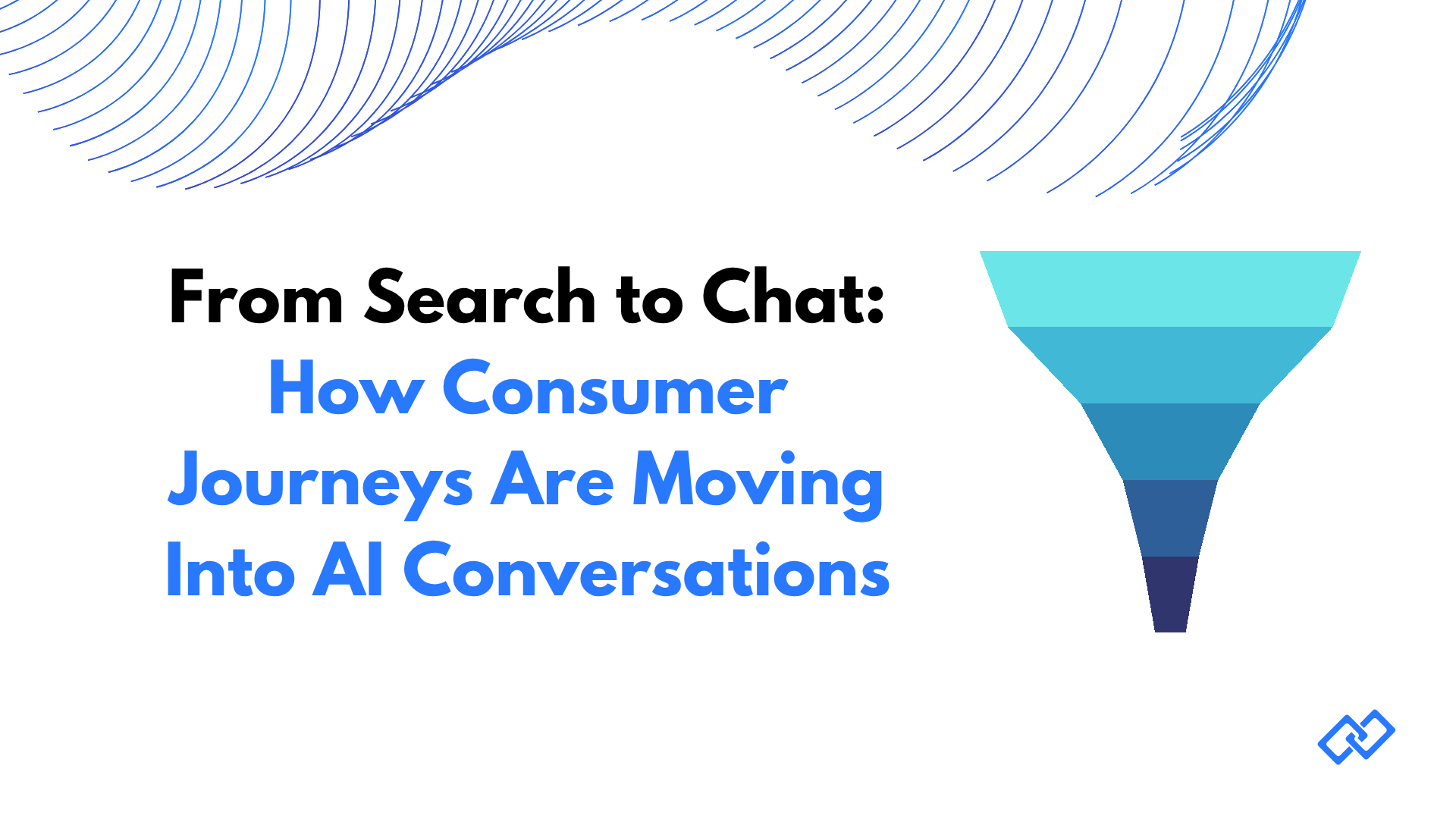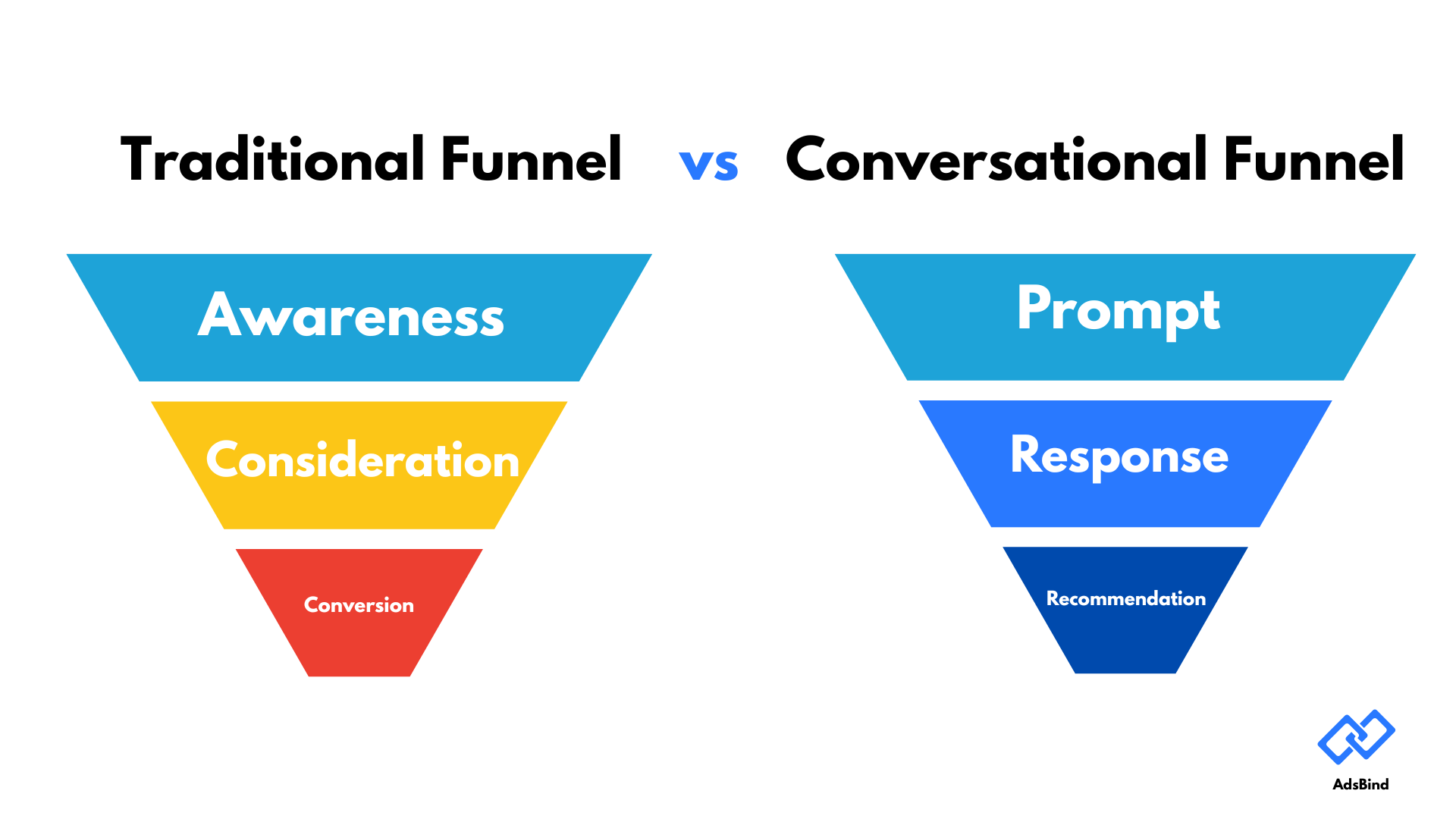From Search to Chat: How Consumer Journeys Are Moving Into AI Conversations

Summary
The way consumers discover, research, and buy has changed - again.
Search once defined intent.
Social defined influence.
Now, AI chat defines decision-making.
As billions of queries move from search boxes into conversations with LLMs and AI agents, marketers face a new challenge: how to reach consumers when there's no "page one of Google."
This is where conversational advertising - and solutions like Adsbind — come in.
The Shift: From Keywords to Conversations
In recent years, Google began losing ground as people shifted away from traditional search - users increasingly turned to AI assistants like ChatGPT, Claude, Gemini, and Perplexity for answers.
People no longer type short keywords. They ask full questions:
"What's the best running shoe for flat feet?"
"Can you recommend a CRM for small teams under $50/month?"
This represents a deeper intent signal than any keyword ever could.
AI chat replaces fragmented browsing with direct dialogue - and marketers must learn to appear inside that dialogue.
Why This Matters for Marketers
1. Intent Is Now Expressed in Natural Language
Search intent used to be inferred. Now, it's explicit.
Users don't search "best project management tools"; they ask:
"Which project management software helps small startups stay under budget?"
That's not just a query - it's a micro-conversation revealing need, price sensitivity, and use case.
2. Trust Has Moved to AI Agents
When users ask an AI assistant for recommendations, they expect personalized, relevant, and brand-safe results.
Marketers must adapt to earning visibility inside trusted AI ecosystems, not just optimizing for SERPs.
3. The Attention Window Is Smaller
AI conversations are single-threaded. There's no infinite scroll, no distractions.
That makes contextual ad placement critical - relevant answers win, irrelevant ones disappear.
A New Marketing Funnel Emerges

This new funnel is faster, narrower, and more focused.
The opportunity for brands is to appear at the moment of conversational relevance.
How AI Conversations Capture Consumer Journeys
Stage 1: Discovery
Consumers ask general questions.
"What's the best AI note-taking app?"
Marketers can position their brand through sponsored responses or branded recommendations.
Stage 2: Comparison
The user refines their question:
"Compare Notion vs. Mem vs. Anytype."
An ad or mention here influences perception - just like top organic results used to.
Stage 3: Conversion
At this point, agents guide users to sign-ups or purchases.
This is where Adsbind's contextual ad infrastructure helps insert sponsored actions without disrupting UX.
Why AI Chat Advertising Outperforms Search
Higher Contextual Relevance: Ads appear only when relevant to the dialogue.
No Banner Blindness: Users are reading, not scrolling.
Stronger Trust: The LLM interface feels neutral, creating credibility.
Real-Time Adaptation: Ads adjust based on evolving conversation.
Think with Google shows users now expect personalization across touchpoints - conversational AI finally delivers it natively.
The Challenge: Visibility Without Pages
There's no "position #1" in a chat interface.
Instead, there's contextual placement - ads or recommendations that flow within responses.
Example:
User: "What's the easiest way to manage expenses for my freelance work?"
LLM: "You could try these tools. Sponsored: BudgetFlow automates your taxes and invoicing."
That's the new top-of-funnel visibility - embedded, useful, and measurable.
The Rise of Conversational KPIs
Traditional KPIs (CPM, CPC, CTR) still matter - but they're evolving.
New metrics include:
Conversation Engagement Rate (CER): How often users engage with or expand sponsored suggestions.
Assisted Conversion Value (ACV): How LLM exposure influences later purchases.
Post-Chat Retention: Whether users return after interacting with a recommendation.
These KPIs redefine performance marketing inside chat environments.
How Adsbind Bridges Search and Conversation
Marketers shouldn't need to be AI engineers to enter this space.
That's why Adsbind exists — it bridges the gap between advertisers and LLM ecosystems.
What Adsbind offers:
Plug-and-play access to ad inventory across AI agents and assistants.
Brand safety controls to ensure contextual integrity.
Real attribution to track engagement within chat.
Developer partnerships so ads reach verified, high-quality conversational apps.
With Adsbind, marketers can transition from SEO and PPC to AEO (Answer Engine Optimization) - where visibility means being part of the response, not buried beneath it.
How Consumer Behavior Is Changing
McKinsey's research shows consumers now value speed, trust, and personalization above all else.
LLMs combine all three:
Speed: Instant answers.
Trust: Perceived neutrality.
Personalization: Dynamic relevance to each query.
Brands that learn to speak inside this new medium - conversationally, contextually, and credibly - will dominate the next decade of discovery.
Future Outlook: The "AEO Era"
By 2027, Answer Engine Optimization (AEO) will join SEO and SEM as a must-have strategy.
Marketers will optimize for how LLMs phrase answers, not just for human readers.
Brands will fight for response inclusion, and advertising platforms like Adsbind will power this ecosystem — connecting intent, context, and commerce in real time.
Final Thoughts
The consumer journey has moved.
It's no longer:
"Search → Click → Browse."
It's now:
"Ask → Get → Decide."
Marketers who understand this shift — and use tools like Adsbind to participate in AI-driven discovery — will lead the next evolution of digital advertising.
👉 Be part of the change. Join the Adsbind waitlist and start experimenting with conversational advertising before the market catches up.